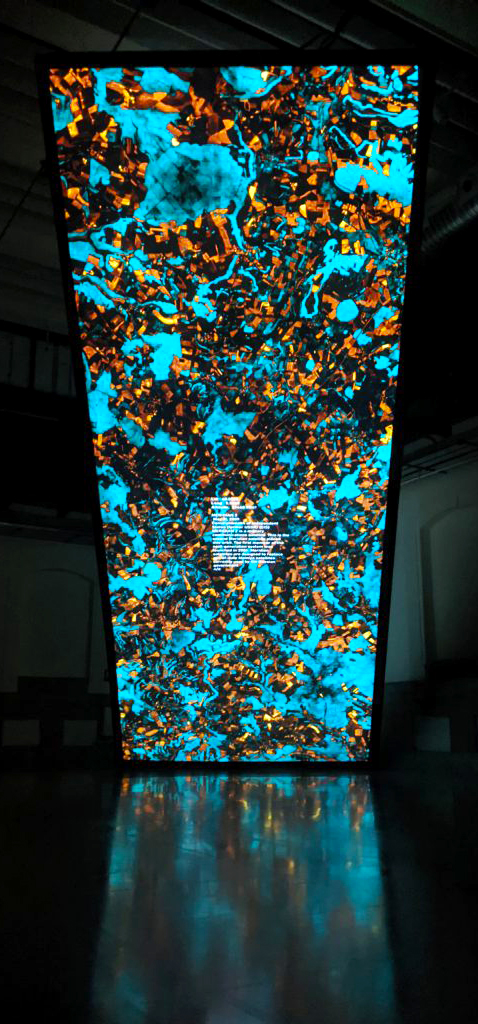
QUADRATURE
Supraspettivi
Nel processo di creazione di Supraspectives, il duo di artisti Quadrature ha raccolto i dati di 590 satelliti spia (recenti e precedenti), la cui traiettoria segue l’installazione. Un terzo di loro può essere considerato spazzatura spaziale, poiché sono obsoleti o danneggiati, ma continuano comunque a sorvolare noi. L’installazione calcola in tempo reale i percorsi di tutti quei satelliti e ricostruisce speculativamente la vista che stanno catturando, offrendo immagini intervenute artisticamente di ciò che i satelliti potrebbero osservare. Vengono selezionati principalmente i satelliti che transitano nei pressi della sede espositiva, abbinati ad altre immagini satellitari particolarmente interessanti o suggestive. Inoltre, un’antenna motorizzata appositamente costruita sul tetto si collega in diretta con i satelliti che sorvolano Tabakalera, trasformando i loro veri segnali radio in suono. Ogni volta che l’installazione si collega con un satellite, lo schermo mostra i dati ad esso relativi, come paese di origine o anno di lancio.




